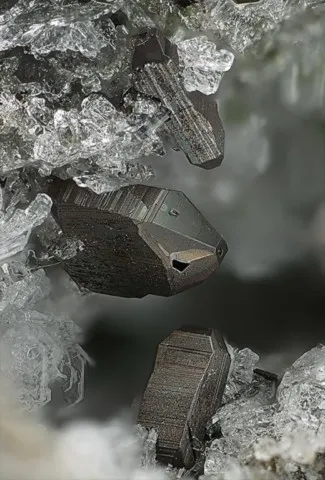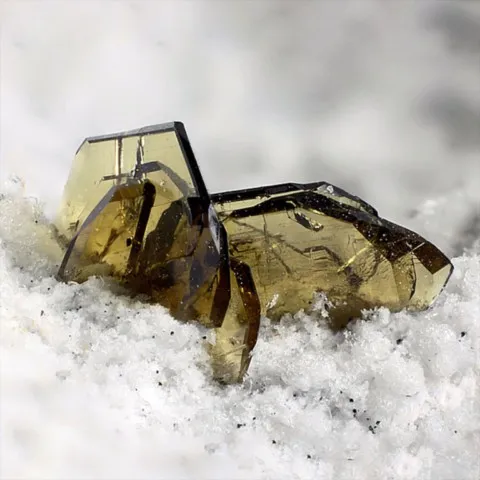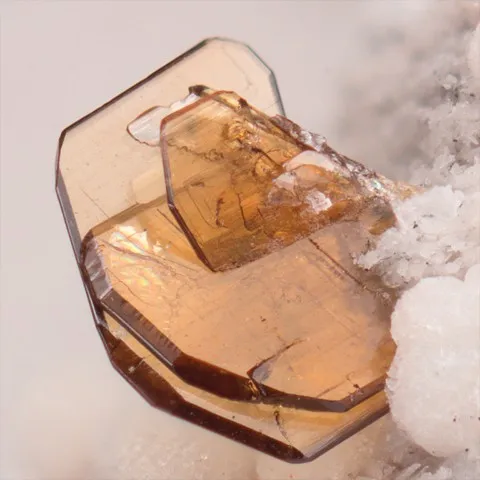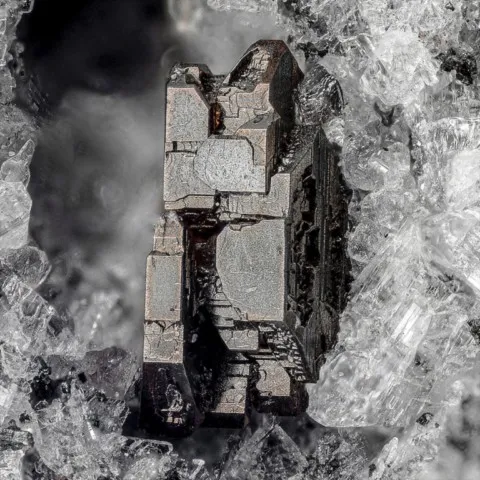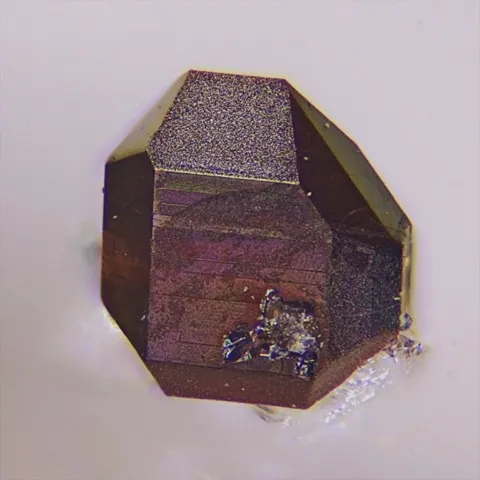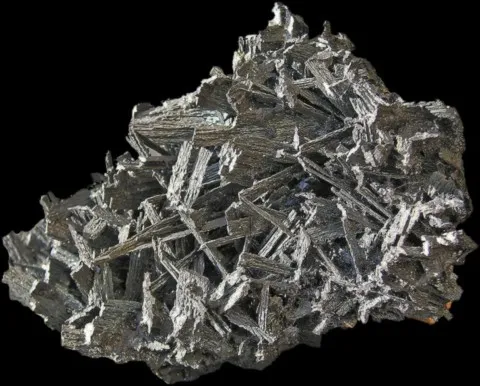FAYALITE
Class : Silicates
Subclass : Nesosilicates
Crystal system : Orthorhombic
Chemistry : Fe2SiO4
Rarity : Common
Fayalite is the iron-bearing pole of the olivine group. It forms two series, one with forsterite (magnesian) and the other with tephroite (manganiferous). Fayalite is rarer than forsterite. It is mainly found in metamorphic sediments rich in iron, but can be present in ultrabasic magmatic rocks, occasionally in granites and pegmatitic veins, it is also present in neoformation in foundry slag. It takes its name from its discovery location : Fayal Island in the Azores (Portugal). The crystals are thin to thick, frequently ending in bevels, sometimes centimetric in size. Fayalite is brown in color, sometimes brownish gray. It has a very marginal role in the refractory industry.
Main photo : Fayalite from Caspar quarry, Ettringen, Vordereifel, Germany © Michael Förch
Fayalite in the World
Twinning
No twin known for this mineral species.
Fakes and treatments
Large centimeter-sized crystals can be produced in foundries and identified as coming from Romania (Baia Sprie), but they are rare on the mineral market.
Right photo : Fayalite analyzed by the University of Vienna given as coming from Baia Sprie, Maramures, Romania - 12 cm group of crystals © Vilhelm Farago
Hardness : 7
Density : 4.39
Fracture : Conchoidal
Streak : White
TP : Translucent to transparent
RI : 1.731 to 1.875
Birefringence : 0.042 to 0.051
Optical character : Biaxial -
Pleochroism : Visible
Fluorescence : None
Solubility : Hydrochloric acid
Magnetism : Paramagnetic
Radioactivity : None

